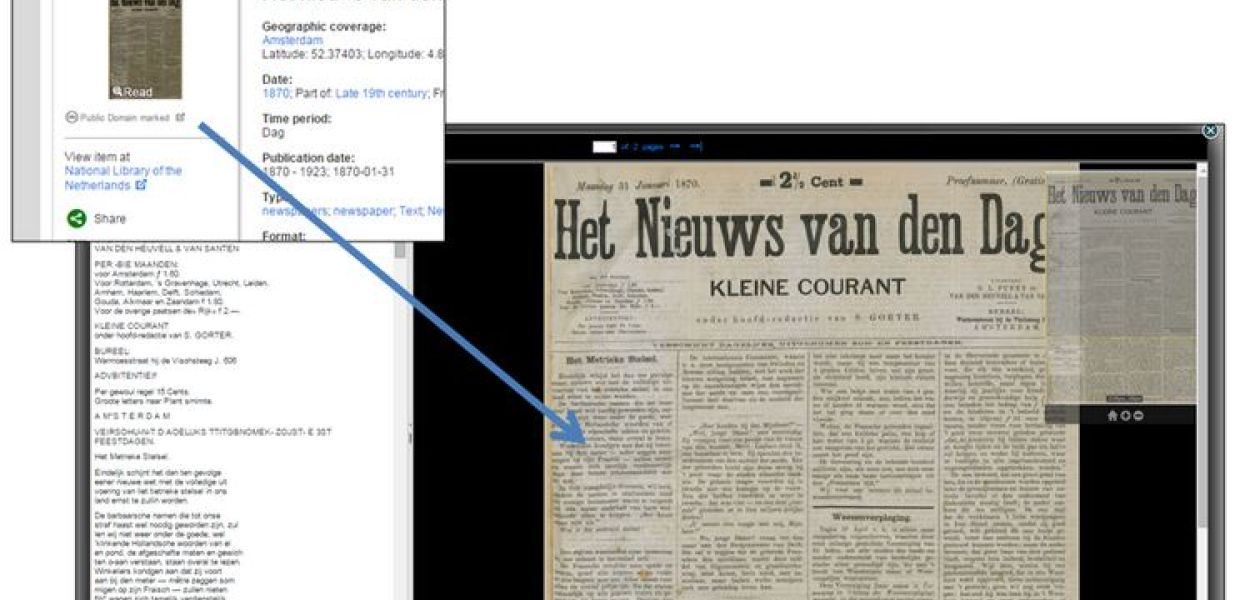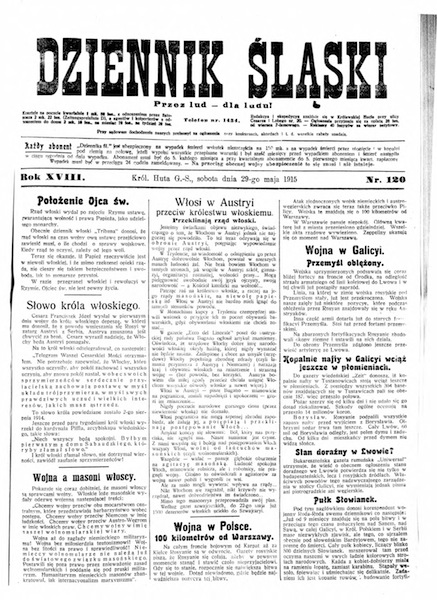Historic newspapers live on through groundbreaking project

The Europeana Newspapers project recently passed its final review with flying colours, with all work packages ‘exceeding expectations and surpassing targets’. Huge congratulations to everyone involved!
Europeana Newspapers is the largest project aggregating material for Europeana. That means over its three-year lifespan it has provided more items of cultural and historical interest than any other project - in this case, 3.6 million digitised newspapers (double its target) of nearly 1,000 newspaper titles from over 20 European libraries.
As a result of using the Europeana Data Model to structure the metadata describing the newspapers, it is possible to show that each issue is part of a collection. This means if you happen across, say, an issue of Polish newspaper ‘Dziennik śląskie’ from 29 May 1915, you can easily find the issue from the day before or the day after, or indeed from any other date. Europeana Newspapers is one of the first projects to use this hierarchical representation for Europeana.

Dziennik Śląski, The European Library, Public Domain
The project is a ground-breaker in another way too - it’s the first time a large-scale project has delivered both images and full texts to Europeana. So, as well as a high quality image of a newspaper page, the text from that page is shown separately in a ‘Content’ box, so you can search, highlight and copy it. That’s useful for researchers, or anyone wanting to copy and paste the text elsewhere, like into a translation engine. There are now over 11.5 million newspaper pages presented in this way.
Browsing these old newspapers is addictive, as shown by the phenomenal length of time that people spend on the dedicated interface built for the project and hosted by The European Library - nearly 15 minutes per session on average. That compares to less than 5 minutes for The European Library site in general.
The project also enhanced a set of impressive tools for libraries to use in their newspaper digitisation work for things like improving the quality of automated text recognition. This has helped stimulate new work at many of the libraries involved in the project, such as the Frederich Tessman Library in Italy, which has used the tools to enhance its own interface.
Although the project has now officially ended, its work continues. Newspapers are still to be added from another five countries, and the whole corpus will be migrated to the new Europeana Cloud data storage system. The newspaper content is already available on the Europeana portal but to encourage greater exploration of it, the bespoke interface will be migrated from The European Library to Europeana. Look out for that in 2016.
It’s clear that Europeana Newspapers has met a real need from the public and research communities to enable full and searchable access to historic newspaper archives online. No more microfiche, no more gently turning yellow fragile pages that were never meant to last. Newspapers live on! So it’s congratulations again to all involved with Europeana Newspapers.

